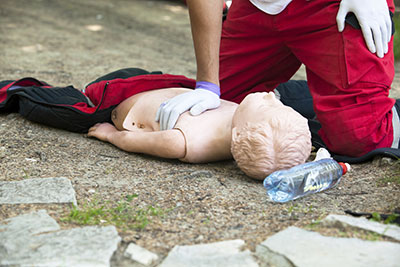Chapter 8 : Child CPRUsually a child’s heart stops because of a breathing emergency. For this reason, giving breaths with compressions is very important for children. When responding to a child in a CPR emergency follow the same steps for compressions, airway and breathing as detailed for adults. Listed below are the EXCEPTIONS for child CPR.
|
|
Usually a child’s heart stops because of a breathing emergency. For this reason, giving breaths with compressions is very important for children.
When responding to a child in a CPR emergency follow the same steps for compressions, airway and breathing as detailed for adults. Listed below are the EXCEPTIONS for child CPR.
